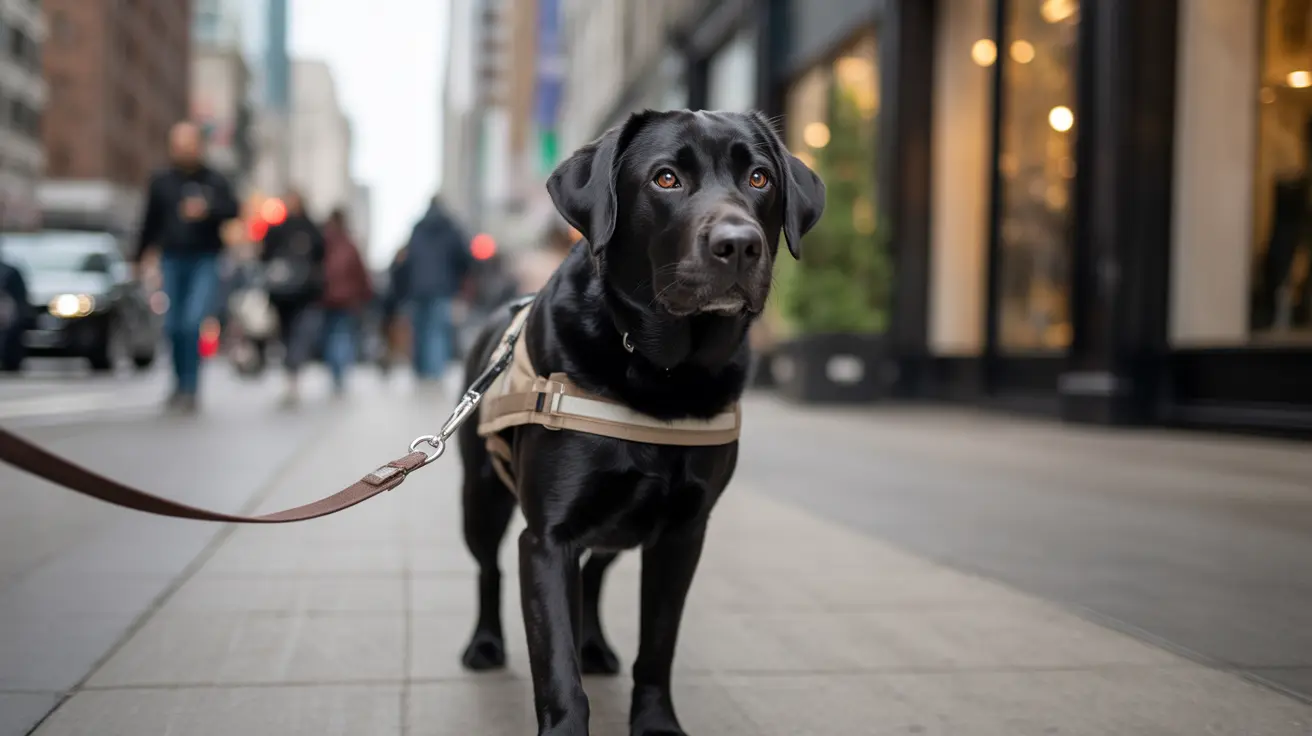How to Establish Clear Communication with Your Dog: A Complete Guide to Understanding and Training
Building clear communication with your dog is the foundation of a strong, trusting relationship that benefits both you and your canine companion. Unlike human communication, dogs rely heavily on body language, energy, and consistent signals to understand and respond to their owners. With approximately 4.5 million dog bites occurring yearly in the United States, learning to effectively communicate with your dog isn't just about training—it's about safety, understanding, and creating a harmonious household where both species can thrive.
Establishing clear communication with your dog requires patience, consistency, and a deep understanding of canine behavior. This comprehensive guide will walk you through the essential elements of dog communication, from reading body language to implementing effective training techniques that create lasting behavioral changes. Whether you're a first-time dog owner or looking to strengthen your existing bond, mastering these communication skills will transform your relationship with your four-legged friend.
Understanding How Dogs Communicate With Us
Dogs communicate with humans through a sophisticated system of body language, vocalizations, and energy that many pet owners overlook or misinterpret. Learning to recognize and respond to these signals is crucial for establishing clear communication with your dog and preventing misunderstandings that can lead to behavioral problems.
Recognizing Stress Signals and Warning Signs
One of the most important aspects of canine communication involves recognizing stress signals that dogs display when they're uncomfortable, nervous, or fearful. These subtle signs often go unnoticed by owners, but catching them early can prevent escalation to more serious behaviors like growling or biting.
Common stress signals include lip licking when no food is present, yawning without being tired, displaying "whale eye" (showing the whites of their eyes), scratching when there are no skin issues, and shaking off when they're not wet. These behaviors indicate that your dog is experiencing discomfort and may need space or reassurance. If these warning signs are ignored, dogs may escalate their communication attempts, potentially leading to more aggressive displays.
Interpreting Mouth and Ear Positions
A dog's mouth and ear positions provide valuable insights into their emotional state and intentions. When your dog has an open, relaxed mouth paired with relaxed ears, they're displaying calmness and contentment. This is the ideal state for training and positive interaction.
Conversely, a dog with a closed mouth, perked ears, and stiff body posture is showing alertness and heightened awareness of their environment. While not necessarily negative, this state indicates your dog is evaluating a situation and may not be as receptive to commands or affection. When you notice ears pulled back combined with a closed mouth, your dog may be showing appeasement, nervousness, or fear—a clear signal that they need space and gentle reassurance rather than forced interaction.
Decoding Tail Language
Perhaps no aspect of dog communication is more misunderstood than tail wagging. Many people assume all tail wagging indicates happiness, but tail movements actually signal arousal, which can be either positive or negative. The key lies in observing the entire context of the tail's position and movement.
A high, stiff tail with rapid wagging might indicate anger or agitation rather than joy. On the other hand, a low wagging tail combined with a lowered body posture or lip licking typically indicates nervousness or anxiety. Understanding these nuances helps you respond appropriately to your dog's emotional state and adjust your communication accordingly.
Managing Your Emotions for Better Dog Communication
Your emotional state directly influences your dog's behavior and ability to learn. Dogs are incredibly sensitive to human emotions and energy, making your calmness and stability crucial components of effective communication. When you remain calm and patient during training sessions, your dog is more likely to stay relaxed and receptive to learning.
If you find yourself becoming frustrated during training, take a break. Dogs can sense your stress and may become anxious or shut down entirely. Instead of pushing through difficult moments, step back, breathe deeply, and return to training when you've regained your composure. This approach not only improves your dog's learning experience but also strengthens your bond by building trust and positive associations with training time.
Building Clear Communication Through Training Techniques
Using Consistent Commands and Body Language
Clear communication with your dog starts with consistency in both verbal commands and physical cues. Dogs are highly attuned to body language and often respond more readily to visual signals than verbal ones. When training, pair your verbal commands with consistent hand signals or body gestures to reinforce your message.
Give each command only once to avoid confusion and maintain clarity. If your dog doesn't respond immediately, resist the urge to repeat the command multiple times. Instead, guide them through the desired behavior and reward success. This approach prevents your dog from learning to ignore initial commands and waiting for multiple repetitions.
Implementing Positive Reinforcement Strategies
Positive reinforcement is essential for building clear communication with your dog and creating reliable behavioral responses. When your dog performs a desired behavior, immediately mark it with a consistent signal—whether that's a verbal cue like "yes" or a clicker—followed by a reward they value.
For commands like recall, making the experience rewarding and positive is crucial for reliability. If coming to you always results in something your dog enjoys, they're more likely to respond consistently, even in distracting environments. Avoid calling your dog to come for negative experiences, as this can damage their trust and willingness to respond.
Teaching Release Words and Boundaries
An often-overlooked aspect of dog communication involves teaching clear beginnings and endings to activities and commands. Use simple release words like "okay," "done," or "free" to signal the end of an exercise or playtime session. This helps your dog understand when they can relax their focus and prevents confusion about expectations.
When addressing undesirable behaviors, interrupt them with a clear "No" or "Eh-Eh" sound, then immediately redirect your dog to appropriate behavior and reward compliance. This approach teaches your dog what you want them to do rather than simply what they shouldn't do.
Gradual Training Progression and Environmental Management
Starting in Low-Stress Environments
Successful communication with your dog requires setting them up for success by carefully managing their learning environment. Begin training in quiet, familiar spaces with minimal distractions, then gradually increase difficulty as your dog demonstrates mastery. This systematic approach builds confidence and ensures that your dog can focus on learning rather than managing environmental stress.
Socialization should follow the same gradual approach, starting in controlled, low-stress environments before exposing your dog to more challenging situations. This method helps dogs overcome fears and build positive associations with new experiences, people, and other dogs.
Breaking Complex Tasks into Smaller Steps
Dog training is inherently a long-term process, and setbacks are completely normal. When facing training challenges, break complex behaviors into smaller, manageable steps that allow your dog to experience frequent success. This approach maintains motivation for both you and your dog while building a solid foundation for more advanced skills.
If your dog struggles with a particular command or behavior, resist the urge to push harder. Instead, simplify the task, return to basics, and gradually rebuild complexity as your dog demonstrates understanding and confidence.
Addressing Common Communication Challenges
Managing Separation Anxiety
Clear communication with your dog extends to helping them understand when you'll be away and building their confidence during alone time. Address separation anxiety by slowly increasing the duration of your absences while ensuring your dog feels secure and occupied with engaging toys or long-lasting chews.
Start with very short departures and gradually extend the time as your dog demonstrates comfort being alone. This systematic approach prevents overwhelming your dog and builds positive associations with your departures rather than anxiety and stress.
Avoiding Common Communication Mistakes
Several common mistakes can undermine your efforts to establish clear communication with your dog. Yelling or using punishment-based training methods can cause fear and damage trust, making your dog less likely to engage positively with you. Instead, focus on calm, consistent communication that builds confidence and understanding.
Avoid ignoring your dog's body language signals, as this can lead to increased stress and behavioral issues. Similarly, inconsistent commands or expectations confuse dogs and slow the learning process. Maintain clear, predictable communication patterns that help your dog understand what you expect from them.
Developing Your Individual Communication Style
Remember that every dog is an individual with unique personality traits, learning preferences, and communication styles. Avoid comparing your dog's progress with others, instead focusing on your pet's individual pace and celebrating incremental successes along the way. What works for one dog may not work for another, so be prepared to adapt your approach based on your dog's responses and needs.
Professional trainers can provide valuable support in bridging communication gaps and developing personalized training strategies. Programs that focus on positive reinforcement and owner involvement typically produce the best results for long-term communication success. Consider investing in training that includes real-world practice and addresses your specific communication challenges.
Building Daily Routines That Support Clear Communication
Establishing consistent daily routines helps reinforce clear communication patterns with your dog. Regular feeding times, exercise schedules, and training sessions create predictable structure that dogs find comforting and engaging. Within these routines, maintain consistent communication cues and expectations to reinforce learning and strengthen your bond.
Use relaxed, open body language and maintain a friendly tone during interactions. Dogs respond best to calm, confident energy that signals safety and leadership. Eye contact can strengthen your bond when used appropriately, but be mindful that prolonged staring can be interpreted as threatening by some dogs.
Frequently Asked Questions
How long does it take to establish clear communication with my dog?
Building clear communication with your dog is an ongoing process that varies depending on your dog's age, personality, and previous experiences. Most dogs begin responding to consistent communication within a few weeks, but developing truly reliable communication can take several months of regular practice. The key is maintaining patience and consistency while celebrating small improvements along the way.
What should I do if my dog seems to ignore my commands?
If your dog appears to ignore commands, first ensure they actually understand what you're asking. Return to basic training in a quiet environment, use clear, single commands, and immediately reward correct responses. Dogs may also "ignore" commands when they're stressed, distracted, or haven't fully learned the behavior in that particular context.
How can I tell if my training methods are working?
Effective communication training shows progress through your dog's increased responsiveness, relaxed body language during training sessions, and willingness to engage with you. You should notice your dog looking to you for guidance more frequently and responding more quickly to familiar commands. Behavioral improvements in daily life situations also indicate successful communication development.
Is it normal for dogs to have setbacks during training?
Yes, setbacks are completely normal and expected during the training process. Dogs may seem to "forget" previously learned behaviors, especially when dealing with distractions, stress, or changes in routine. When setbacks occur, simply return to basics, reduce distractions, and rebuild the behavior gradually. Patience and consistency are key to working through these temporary challenges.
Can older dogs learn new communication skills?
Absolutely! While puppies may learn faster, adult and senior dogs can definitely develop new communication skills and improve their responsiveness to training. Older dogs often have longer attention spans and may actually be easier to train once they understand what you're asking. The same principles of consistency, positive reinforcement, and patience apply regardless of your dog's age.
What role does my energy play in communicating with my dog?
Your emotional state and energy significantly impact your dog's ability to learn and communicate with you. Dogs are highly sensitive to human emotions and will often mirror your stress, excitement, or calmness. Maintaining calm, confident energy during training sessions helps your dog stay relaxed and focused, leading to better communication outcomes.
Should I use treats for all training, or are there other rewards?
While treats are excellent motivators for many dogs, effective communication involves discovering what your individual dog values most. Some dogs prefer praise, petting, play, or access to favorite activities. Observe your dog's preferences and use a variety of rewards to keep training interesting and maintain motivation. The key is ensuring the reward is something your dog genuinely values and wants to work for.
Conclusion
Establishing clear communication with your dog is a rewarding journey that requires patience, consistency, and understanding of canine behavior. By learning to read your dog's body language, maintaining calm energy during training, and using positive reinforcement techniques, you can build a strong foundation for lifelong communication and companionship. Remember that every dog is unique, and developing effective communication takes time and practice.
Focus on celebrating small victories, maintaining consistent routines, and always approaching training from a place of understanding rather than frustration. With dedication and the right techniques, you'll develop the clear, effective communication that strengthens your bond and creates a harmonious relationship with your canine companion for years to come.






